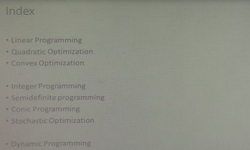At the beginning of the 21st century, fuel cells meet the power needs of a variety of applications. The fuel cell is electrochemical device that converts chemical energy directly into electrical and thermal energy. In this thesis, a fuel cell simulat...
http://chineseinput.net/에서 pinyin(병음)방식으로 중국어를 변환할 수 있습니다.
변환된 중국어를 복사하여 사용하시면 됩니다.
- 中文 을 입력하시려면 zhongwen을 입력하시고 space를누르시면됩니다.
- 北京 을 입력하시려면 beijing을 입력하시고 space를 누르시면 됩니다.
https://www.riss.kr/link?id=T9242389
- 저자
-
발행사항
수원 : 成均館大學校 大學院, 2003
-
학위논문사항
학위논문(석사) -- 성균관대학교 대학원 , 에너지 시스템공학전공 , 2004. 2
-
발행연도
2003
-
작성언어
한국어
- 주제어
-
KDC
563.99 판사항(4)
-
발행국(도시)
경기도
-
형태사항
v, 73p. : 삽도 ; 26cm.
-
일반주기명
참고문헌: p. 68-69
- 소장기관
-
0
상세조회 -
0
다운로드
부가정보
다국어 초록 (Multilingual Abstract)
In this thesis, a fuel cell simulator, which can generate the actual V-I characteristic of PEMFC, has been proposed and based on the simulator, a 3[kW] fuel cell generation system has been developed. The performance of the developed system has been examined by simulation and experimental results and from the results, it is highly expected that the developed system could be effectively applied for the domestic applications, such as residential power generation.
A typical fuel cell, which is operated in ohmic region and has output voltage from 39[V_(dc)]-60[V_(dc)], is selected in order to model the fuel cell simulator. In the activation region, the output voltage is assumed as the constant output voltage(60[V_(dc)]) for the simplicity and otherwise below 39[V_(dc)], the simulator is controlled to shutdown in order to express the concentrate region which output voltage is dramatically decreased to zero. This highly nonlinear V-I characteristic is achieved using the simple buck converter, integrated with an advanced control algorithm.
In additional, to verify fuel cell generation system performance and operation, full-bridge DC/DC converter and single-phase DC/AC inverter are designed and manufactured for fuel cell applications.
Because output generated by the fuel cell stack (fuel cell simulator) has low voltage, it is necessary that output voltage should be boosted to drive effectively and applicably at other systems. The boosting voltage becomes voltage of DC link.
To supply DC voltage generated by the fuel cell simulator instead of fuel cell stack in the commercial load, it should be converted into the AC voltage.
At the beginning of the 21st century, fuel cells meet the power needs of a variety of applications. The fuel cell is electrochemical device that converts chemical energy directly into electrical and thermal energy.
In this thesis, a fuel cell simulator, which can generate the actual V-I characteristic of PEMFC, has been proposed and based on the simulator, a 3[kW] fuel cell generation system has been developed. The performance of the developed system has been examined by simulation and experimental results and from the results, it is highly expected that the developed system could be effectively applied for the domestic applications, such as residential power generation.
A typical fuel cell, which is operated in ohmic region and has output voltage from 39[V_(dc)]-60[V_(dc)], is selected in order to model the fuel cell simulator. In the activation region, the output voltage is assumed as the constant output voltage(60[V_(dc)]) for the simplicity and otherwise below 39[V_(dc)], the simulator is controlled to shutdown in order to express the concentrate region which output voltage is dramatically decreased to zero. This highly nonlinear V-I characteristic is achieved using the simple buck converter, integrated with an advanced control algorithm.
In additional, to verify fuel cell generation system performance and operation, full-bridge DC/DC converter and single-phase DC/AC inverter are designed and manufactured for fuel cell applications.
Because output generated by the fuel cell stack (fuel cell simulator) has low voltage, it is necessary that output voltage should be boosted to drive effectively and applicably at other systems. The boosting voltage becomes voltage of DC link.
To supply DC voltage generated by the fuel cell simulator instead of fuel cell stack in the commercial load, it should be converted into the AC voltage.
목차 (Table of Contents)
- 목차 = I
- 제1장 서론 = 1
- 제2장 연료전지 발전시스템 = 4
- 2.1 연료전지의 발전 = 4
- 2.2 연료전지의 특징 = 7
- 목차 = I
- 제1장 서론 = 1
- 제2장 연료전지 발전시스템 = 4
- 2.1 연료전지의 발전 = 4
- 2.2 연료전지의 특징 = 7
- 2.3 연료전지 발전시스템의 기본 구성 = 8
- 2.4 연료전지 발전시스템 구현 = 11
- 제3장 연료전지 발전시스템용 전력변환 회로 = 16
- 3.1 연료전지 시뮬레이터 = 16
- 3.2 연료전지 시뮬레이터의 제어 = 21
- 3.3 승압용 풀 브리지 DC-DC 컨버터 = 25
- 3.4 풀 브리지 컨버터의 제어 = 34
- 3.5 풀 브리지 DC-AC 인버터의 설계 = 37
- 3.6 풀 브리지 인버터의 제어 = 42
- 제4장 연료전지 발전시스템 시뮬레이션 = 46
- 4.1 연료전지 발전시스템 시뮬레이션 = 46
- 제5장 연료전지 발전시스템 실험결과 = 54
- 5.1 1.8[kW] 저항 부하 실험 = 55
- 5.2 3[kW] 정류 부하 실험 = 60
- 제6장 결론 = 66
- 참고문헌 = 68
- [Abstract] = 70
- 부록 A = 72












